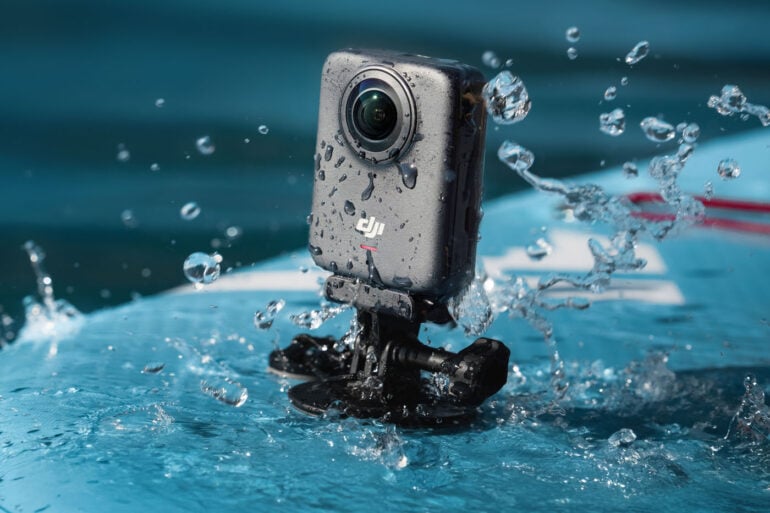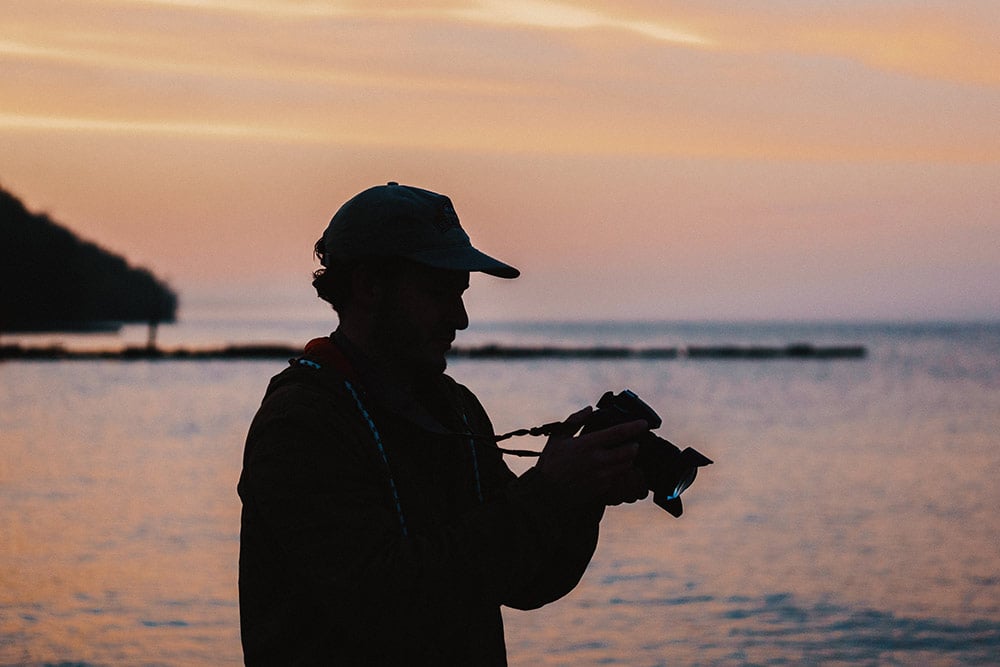Following its teaser, DJI unveils its very first 360° camera. With the Osmo 360, the Chinese brand enters a market so far dominated by Insta360. Featuring a 1″ sensor, 8K 50p video, a compact form factor, record-breaking 100-minute battery life, and intelligent controls… Let’s take a closer look at this 360 camera aiming to stand out from the competition.
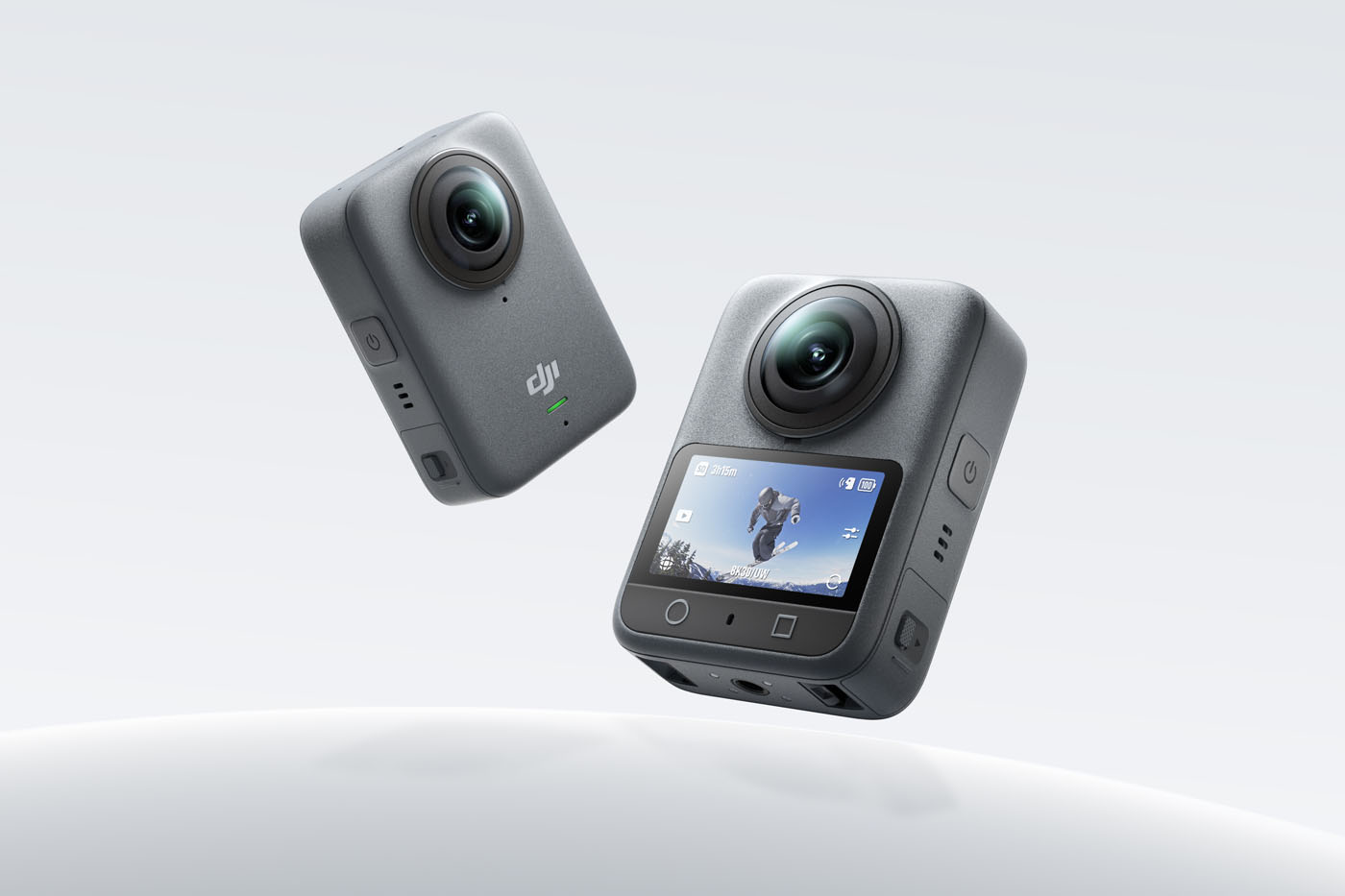
Sommaire
- A compact and ambitious design
- DJI pioneers the 1-inch square sensor in a 360° camera
- 8K 50p video
- D-Log M, stabilization and smart subject tracking
- 360° photos in 120 MP
- Compatible with Premiere Pro and DJI Mic
- Battery life and storage: 100 min and 105 GB internal
- Osmo 360 pricing and availability
- Our first impressions of DJI’s Osmo 360
A compact and ambitious design
Unlike the Insta360 X5, which serves as the benchmark in terms of form factor, the Osmo 360 opts for a design much closer to an action camera. It adopts a compact rectangular body, measuring 61 × 36.3 × 81 mm and weighing just 183 g.
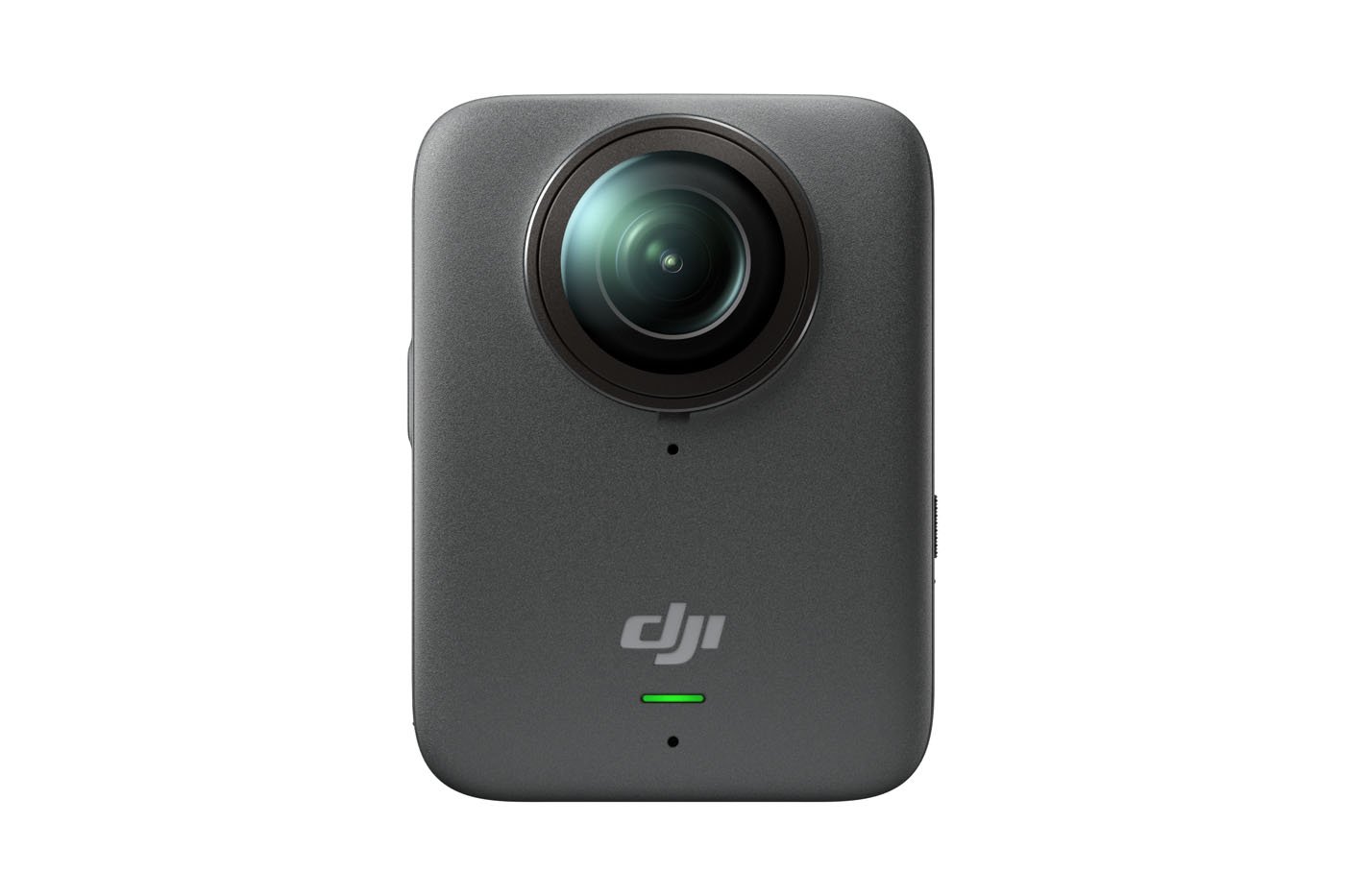

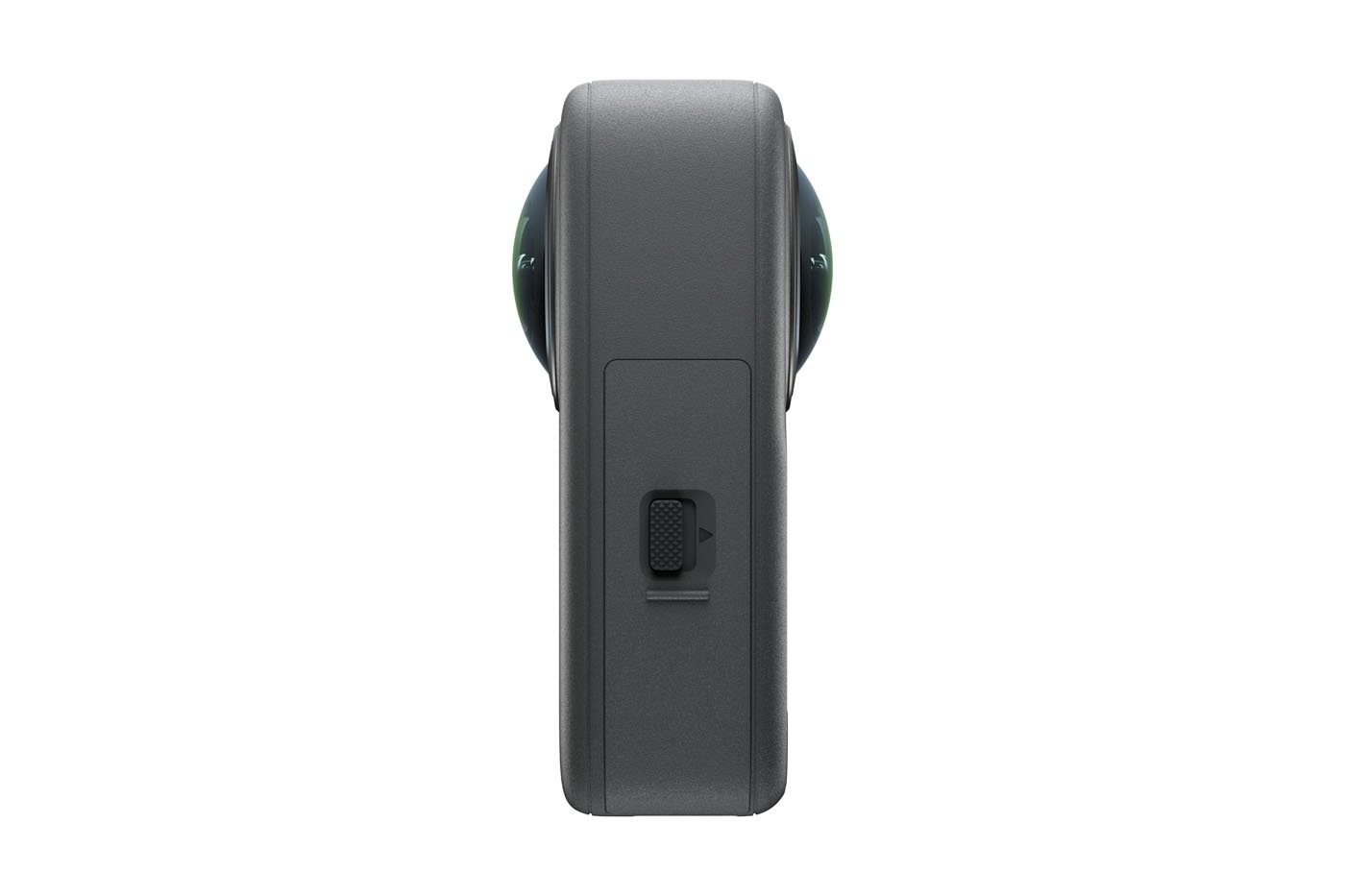

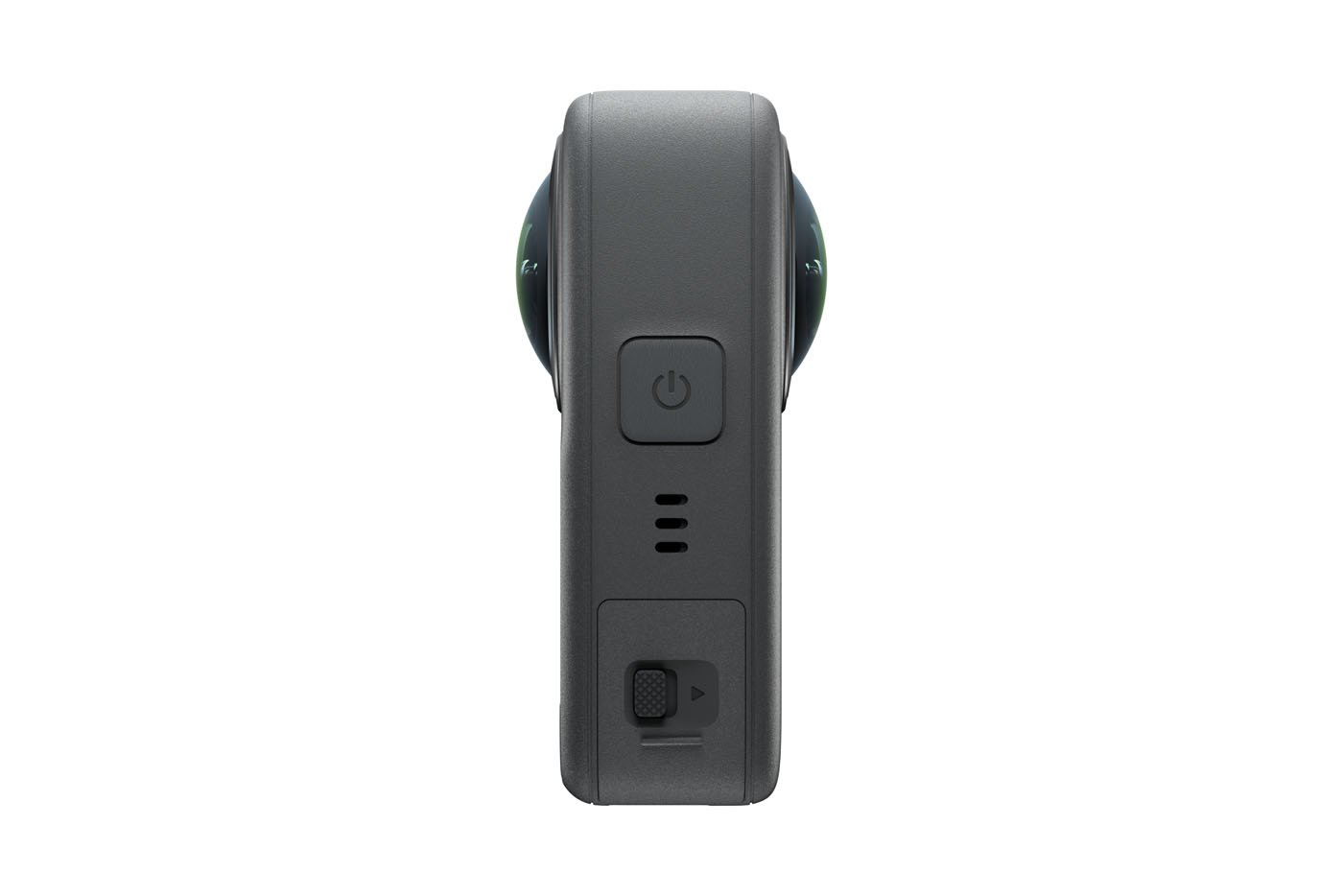

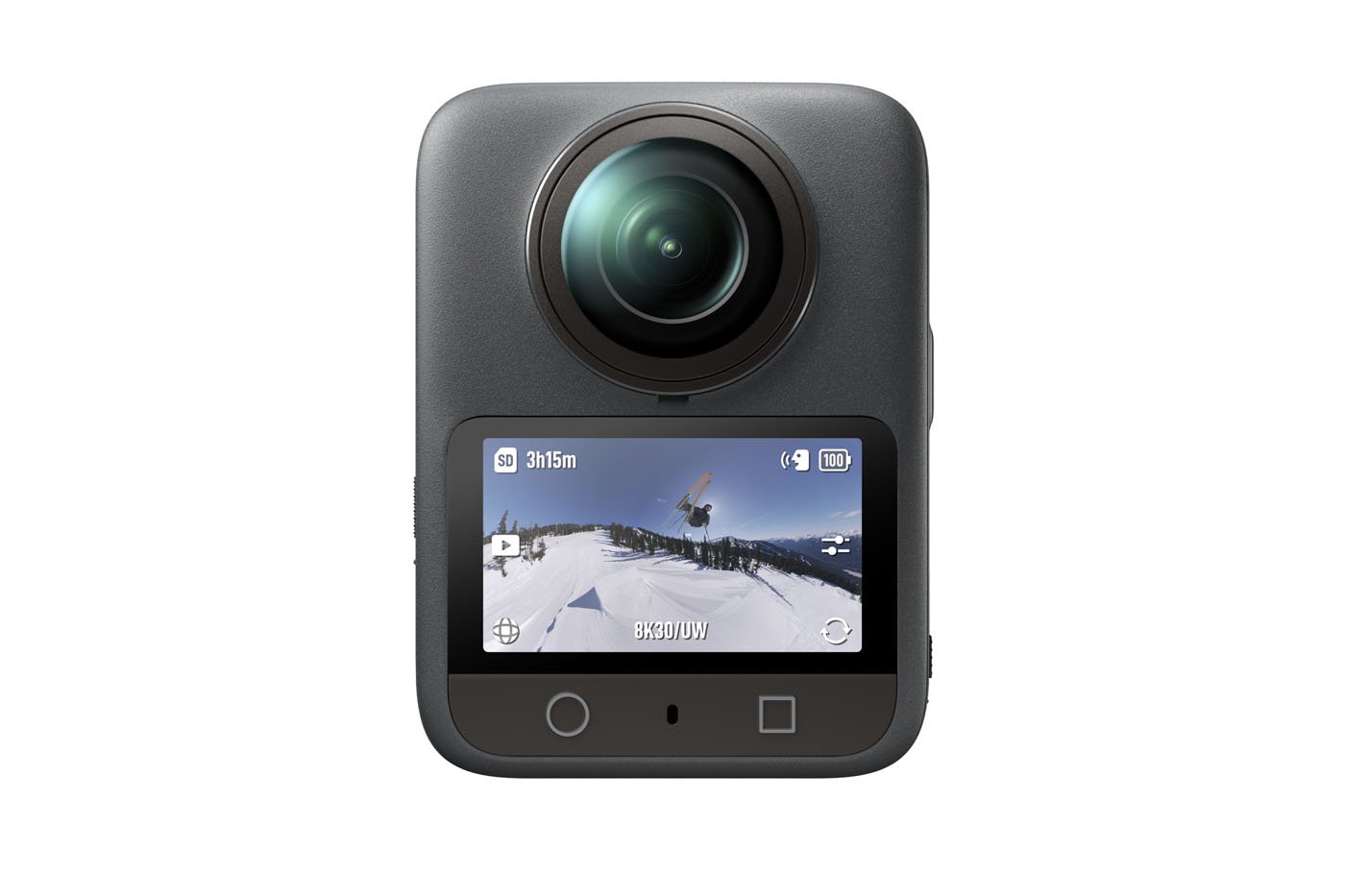

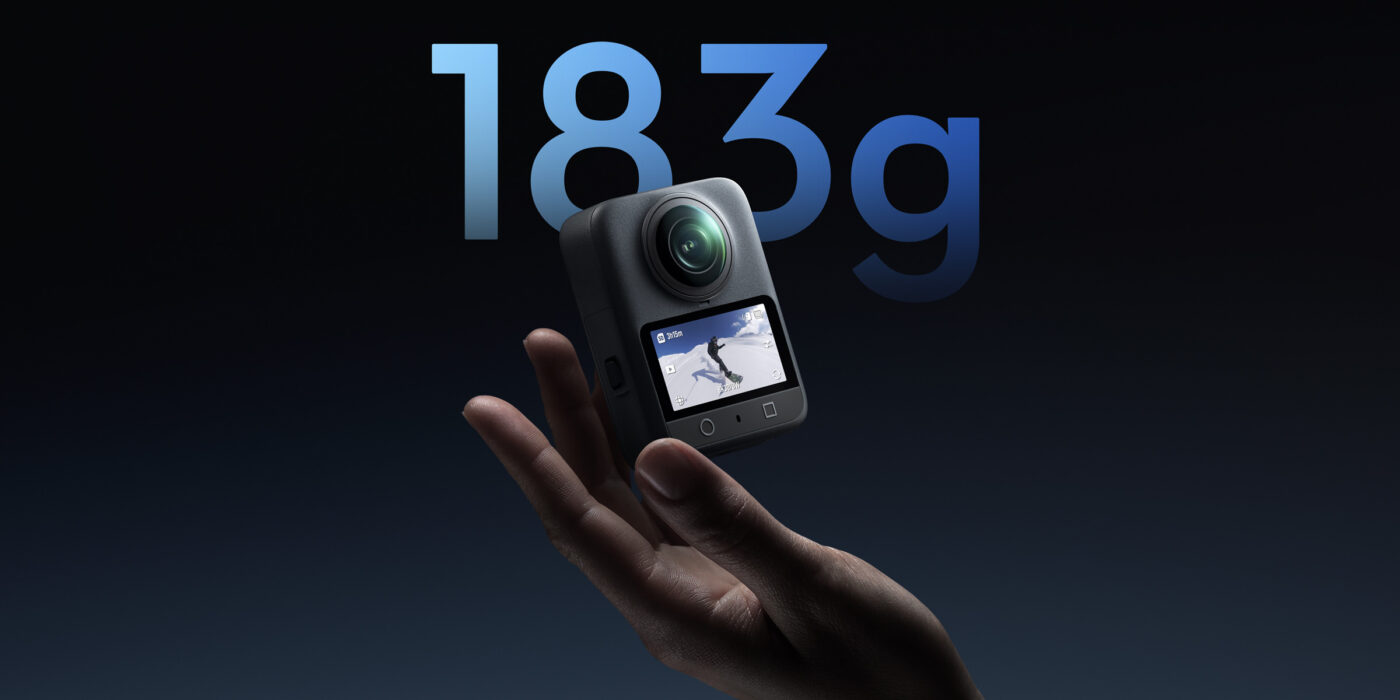

On one side, there’s a 2-inch touchscreen (314×556 px) with a peak brightness of 800 nits.
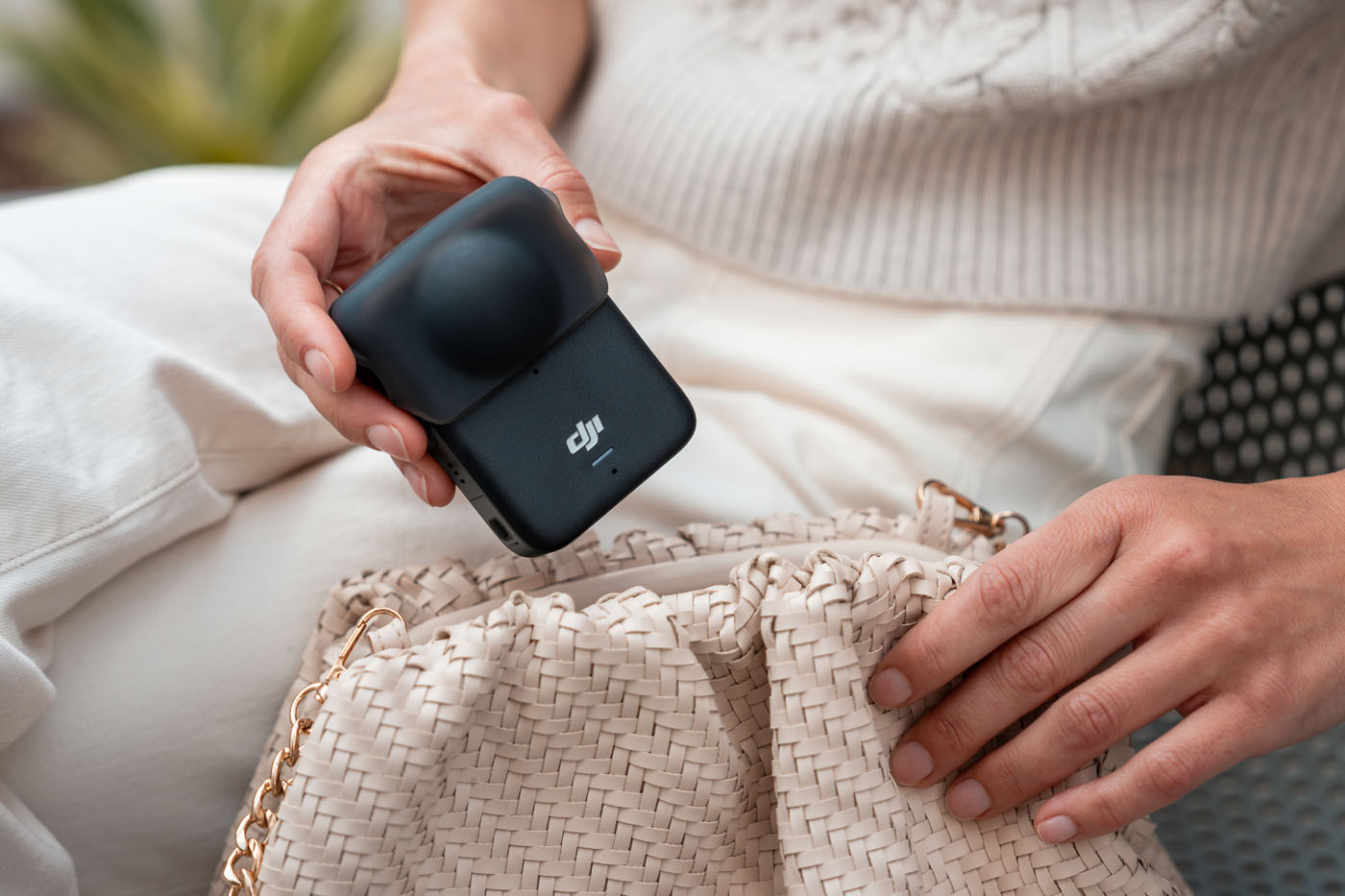

The camera features a magnetic quick-release mount, compatible with Osmo Action 5 Pro accessories. It can be attached to an invisible selfie stick or a standard support via a 1/4″ thread.
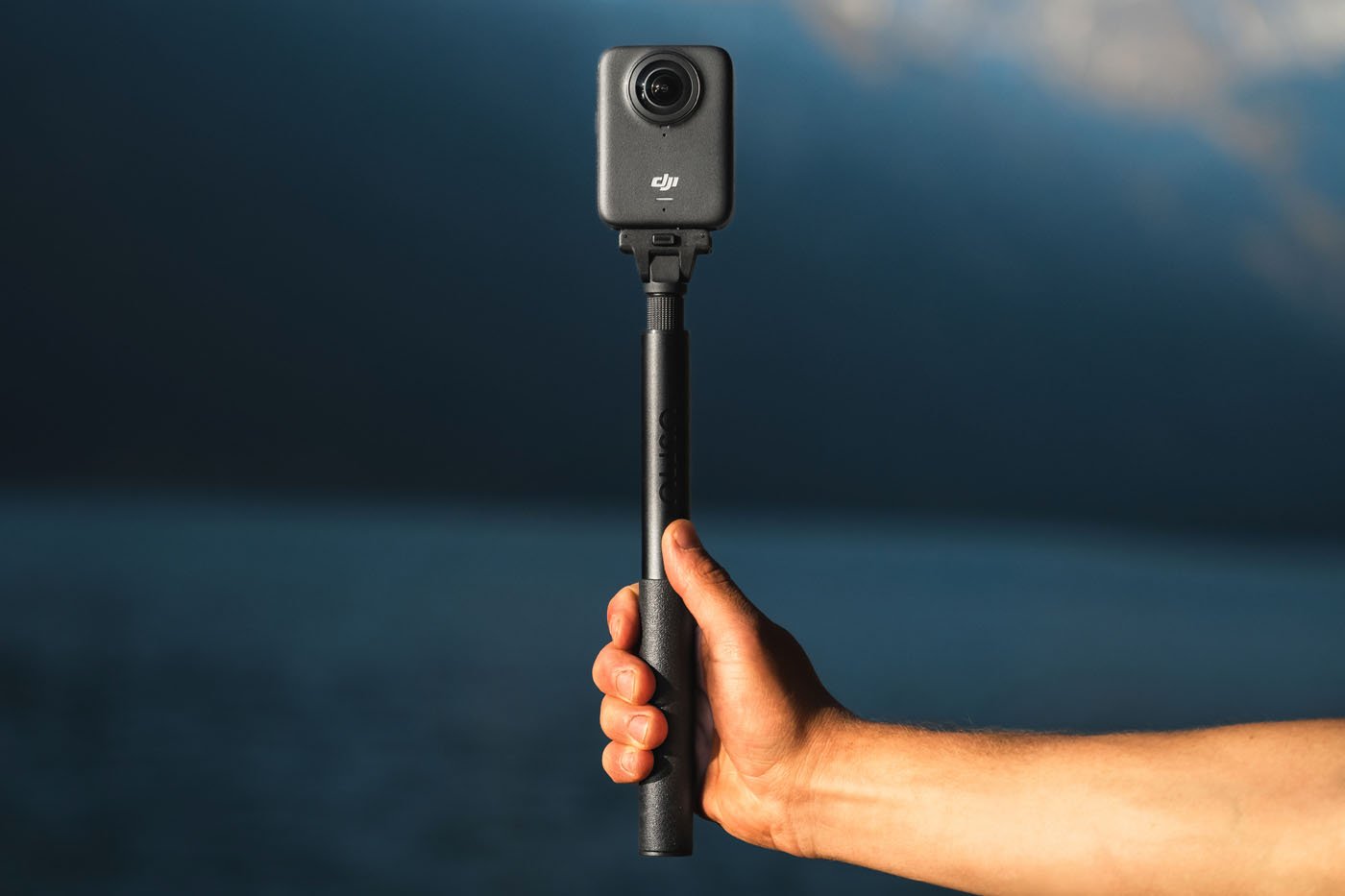

It’s rated to withstand temperatures down to -20°C and is IP68 waterproof up to 10 m, without any additional housing.
DJI pioneers the 1-inch square sensor in a 360° camera
The Osmo 360’s key feature lies in its dual 1/1.1″ CMOS sensors (marketed as 1-inch by DJI, although no exact specs provided), using a square format—a first for a 360° camera.
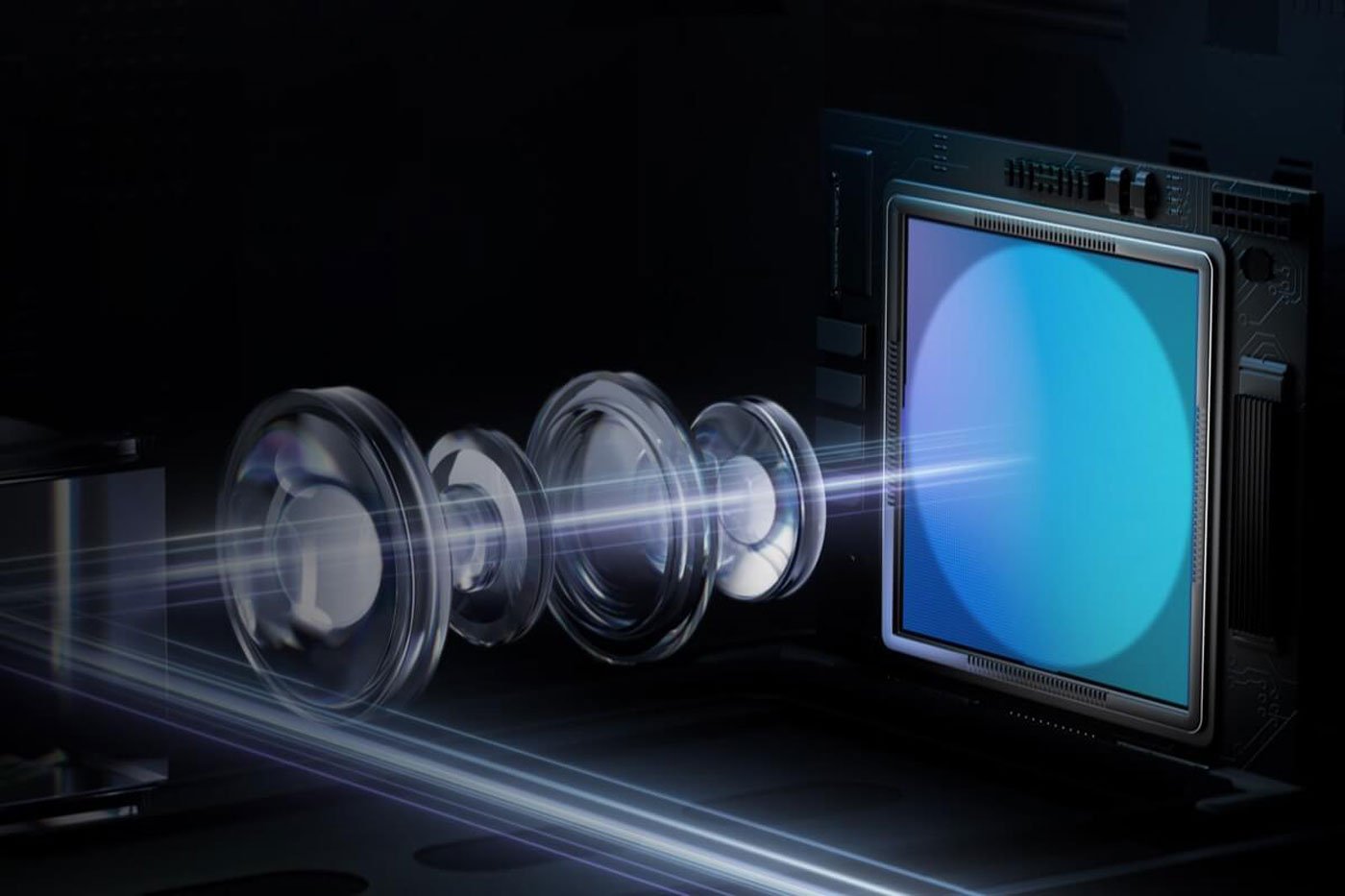

Each sensor is paired with a lens offering an aperture of f/1.9 and a 180° field of view. DJI doesn’t allow front lens swapping, but provides lens protectors.


This setup promises optimal 360° HDR capture, with a usable sensor area that’s 25% larger than a rectangular sensor, according to DJI.
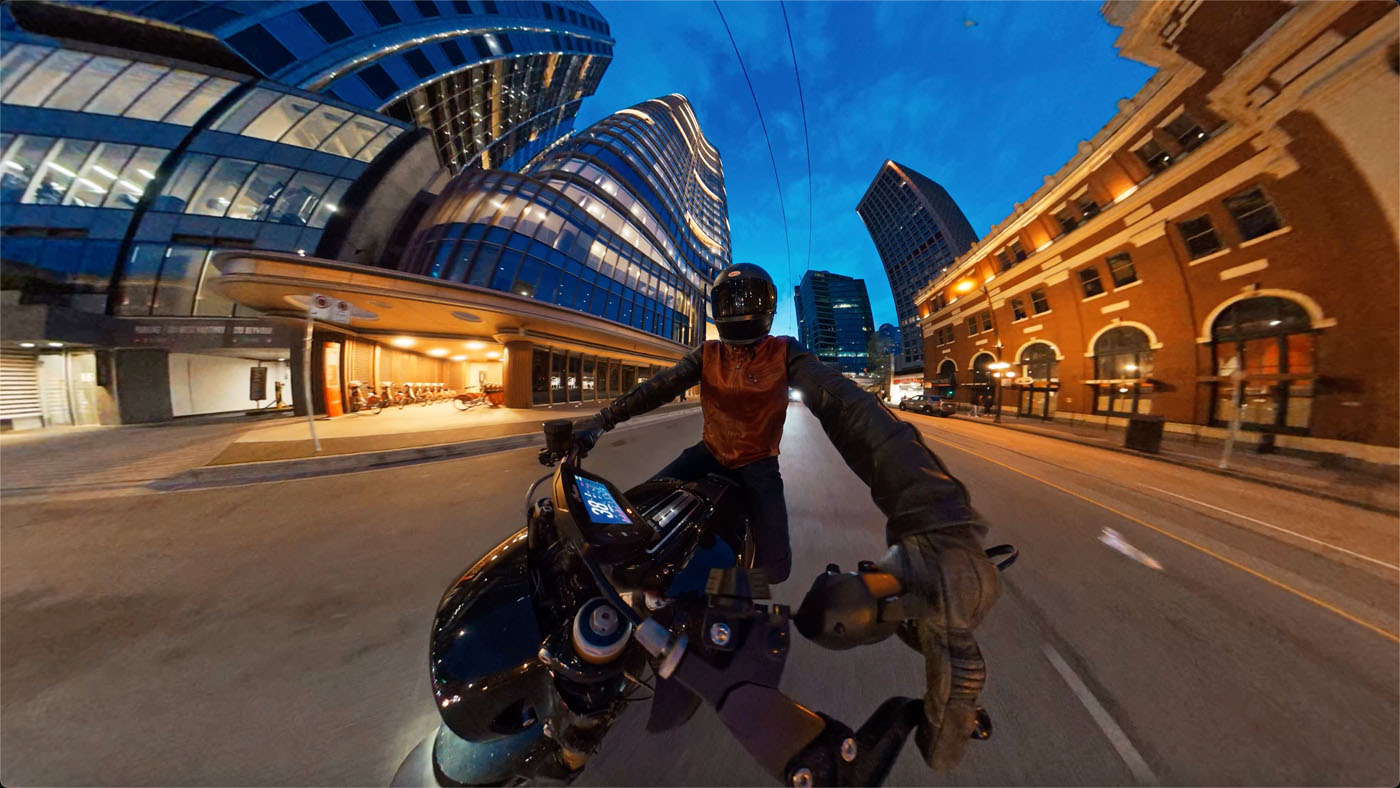

8K 50p video
On the video side, the Osmo 360 can record in 8K 50p (7680 × 3840 px), combining high definition with fluid motion—even if that figure refers to full 360° capture. You can shoot in 6K 60p to gain 10 extra frames per second.
If you’re after maximum smoothness, you can shoot 360° in 4K at 100 fps, and even in 240 fps (in 2K, 1:1 aspect ratio) in Selfie mode, where the field of view centers on the invisible stick, which is automatically removed in-camera.
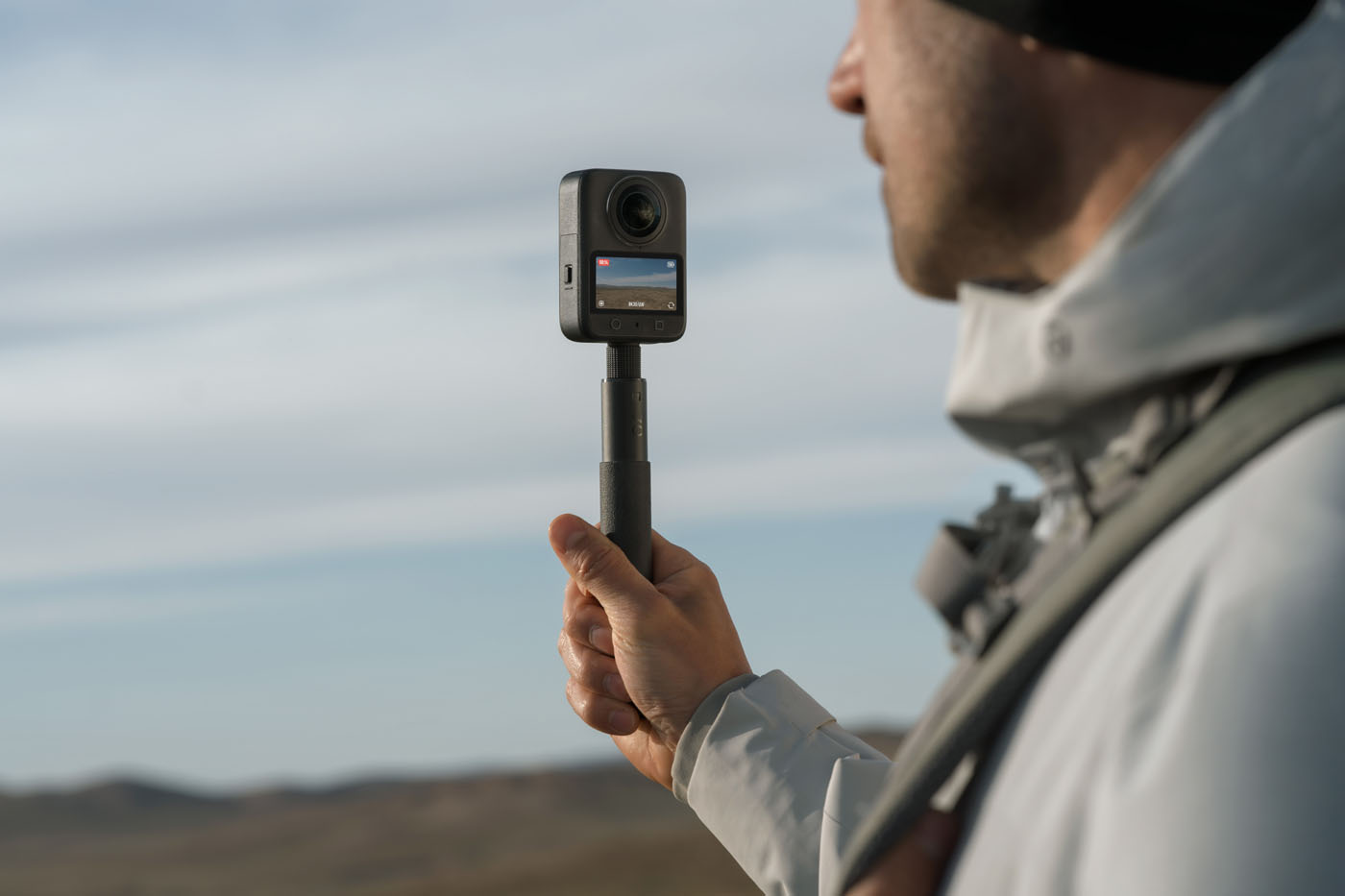

D-Log M, stabilization and smart subject tracking
Maximum video bitrate reaches 170 Mbps, with files recorded in MP4 (HEVC) or OSV (360° format). The minimum stitching distance for 360° capture is 75 cm; anything closer may result in poor sensor alignment.
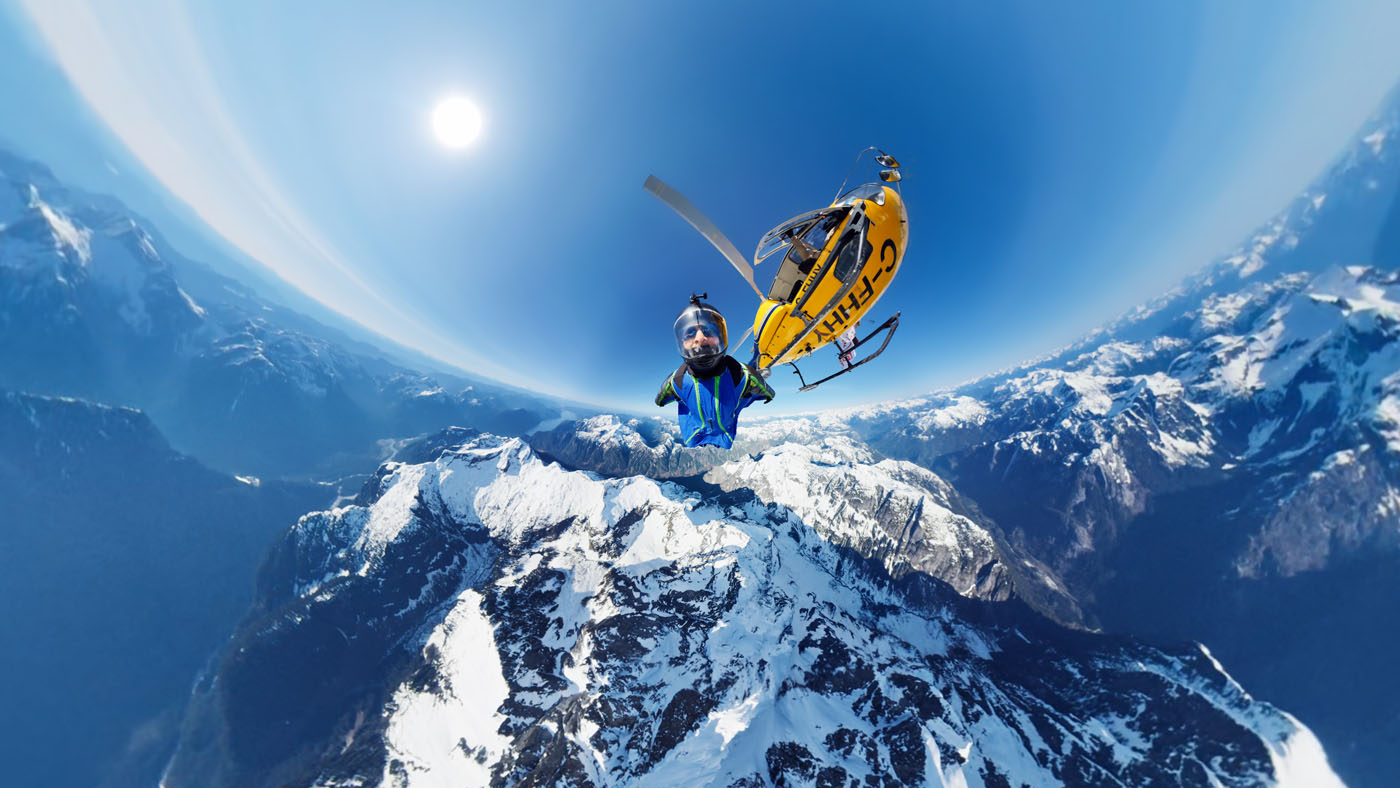

Pro videographers will appreciate support for 10-bit capture and the D-Log M profile, already found on other DJI cameras. It maximizes dynamic range—up to 13.5 stops per DJI—while ensuring seamless color grading across multiple DJI devices.
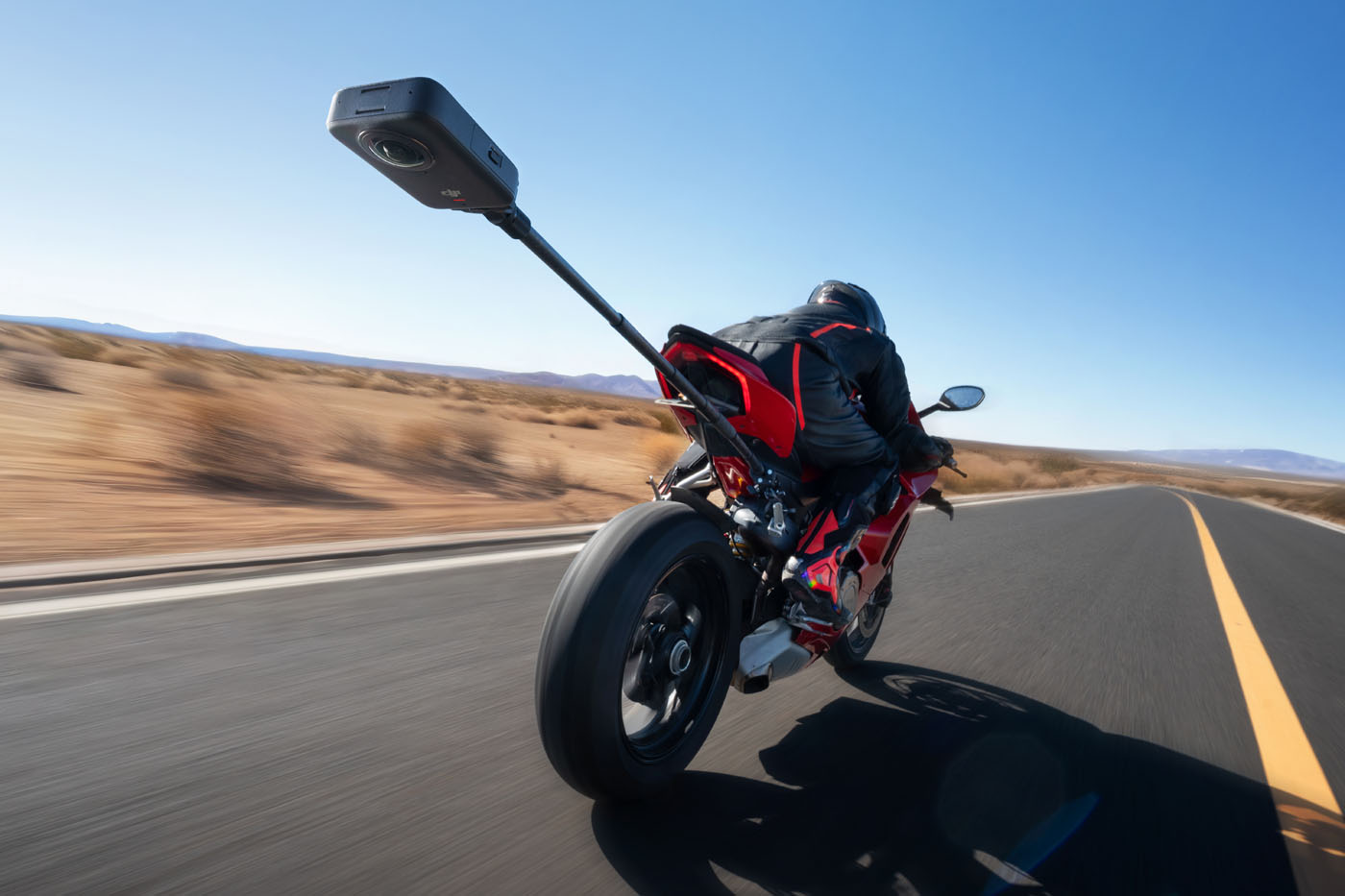

The camera includes DJI’s latest stabilization tech: HorizonSteady (for full 360° horizontal stabilization) and RockSteady 3.0 (for single-lens dynamic stabilization), depending on shooting mode. It supports various video modes (Hyperlapse, Timelapse, Vortex—Insta360’s Bullet Time rival—and Selfie mode).
Voice controls from the Osmo Action return, with gesture shooting, plus intelligent subject tracking (people, animals, vehicles) and GyroFrame framing via DJI Mimo.
360° photos in 120 MP
On the photo side, the camera can capture panoramas up to 120 MP (15520 x 7760 px) in a 2:1 aspect ratio. Single-lens stills can be shot in JPEG or DNG at 30.72 MP (6400 x 4800 px) in 4:3 format.
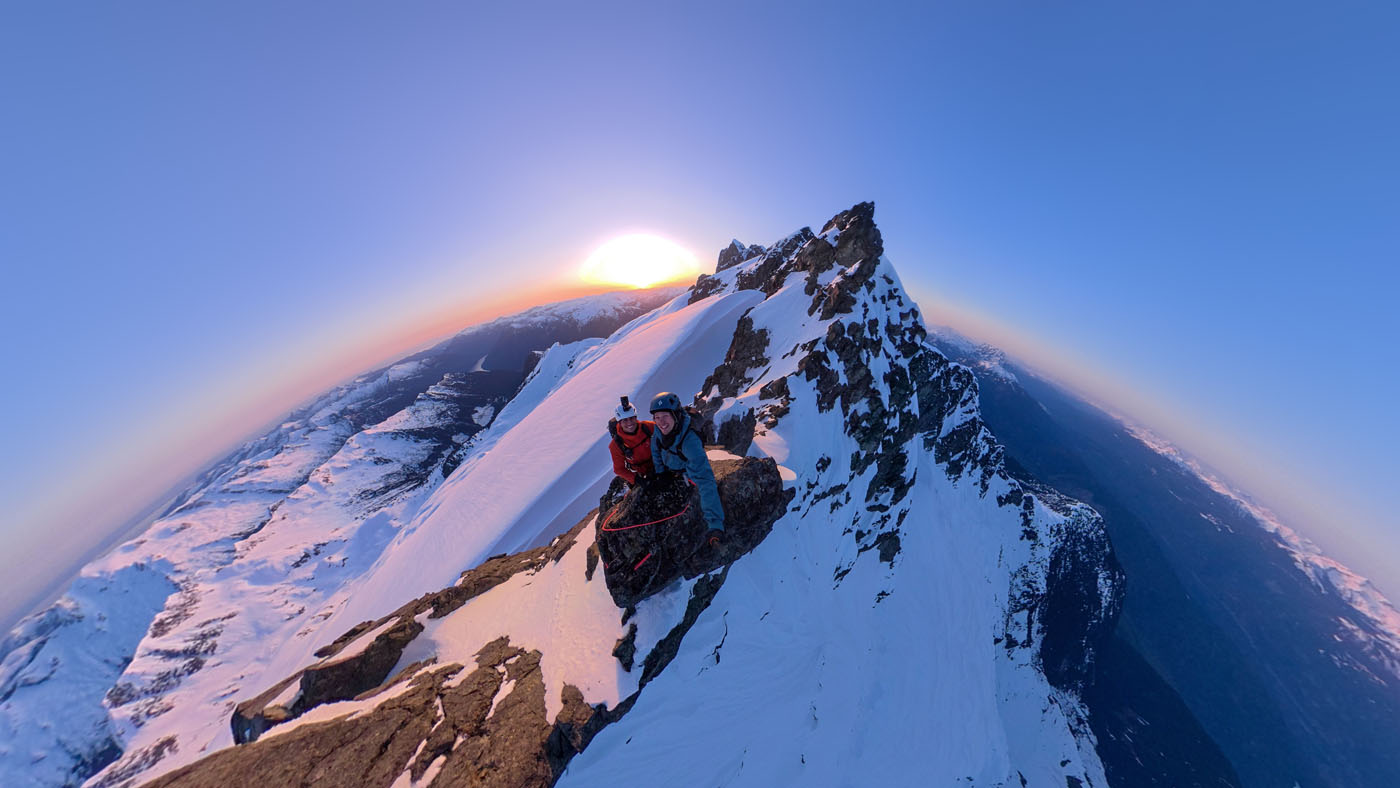

The camera features an ISO range from 100 to 51200 and shutter speeds from 1/8000 sec to 30 sec for stills.
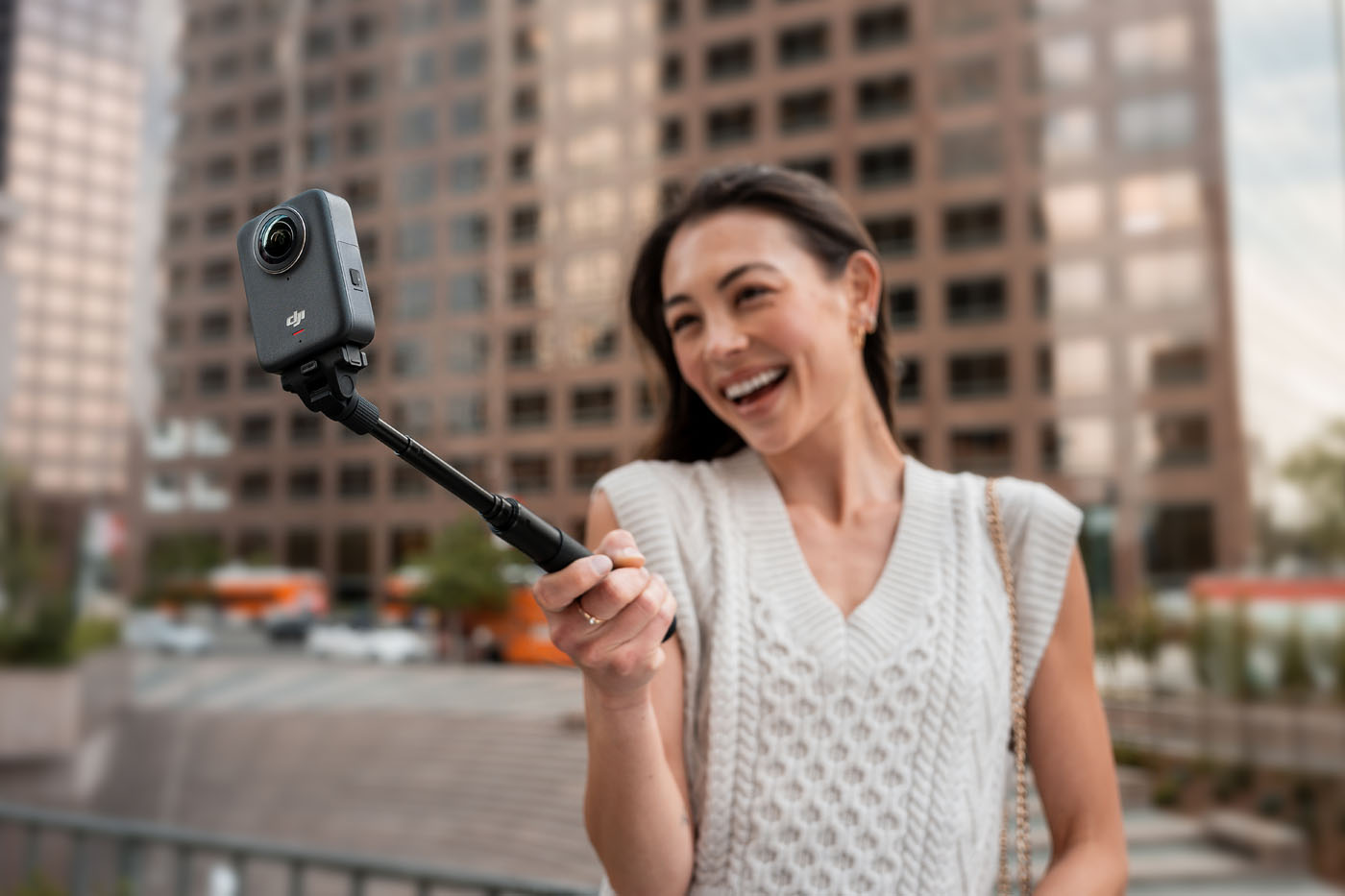

Compatible with Premiere Pro and DJI Mic
The Osmo 360 offers an integrated workflow via the DJI Mimo mobile app, DJI Studio desktop app, and a Premiere Pro plug-in for direct editing of OSV footage in Adobe’s software.
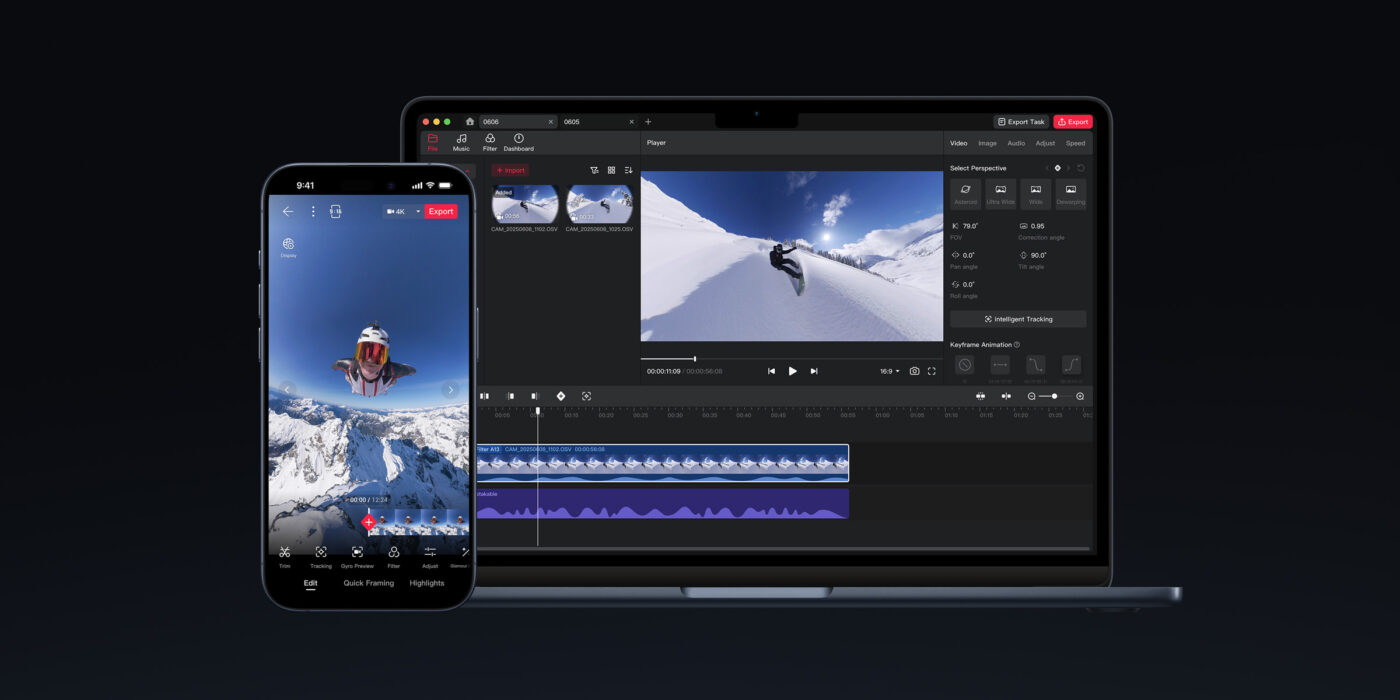

It supports up to two DJI Mics without a receiver, as well as internal audio recording (with two noise reduction modes), using 4 microphones spread across three sides. Files can be exported via USB-C or Wi-Fi 6, and it also supports Bluetooth 5.1.
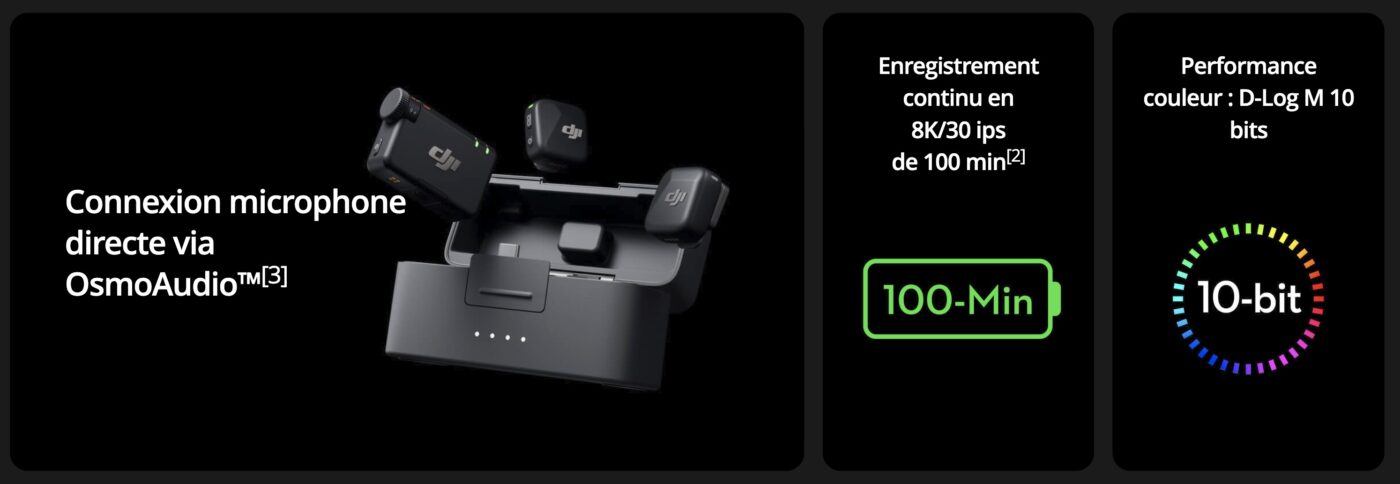

Battery life and storage: 100 min and 105 GB internal
According to DJI, the camera can record in 8K30p for 100 minutes—a record for 360° cameras. By comparison, the Insta360 X5 offers 88 min. This is made possible by the Extreme Plus battery (1950 mAh), rechargeable to 50% in just 12 minutes. It’s the same battery used in the last three Osmo Action generations (5 Pro, 4, and 3).
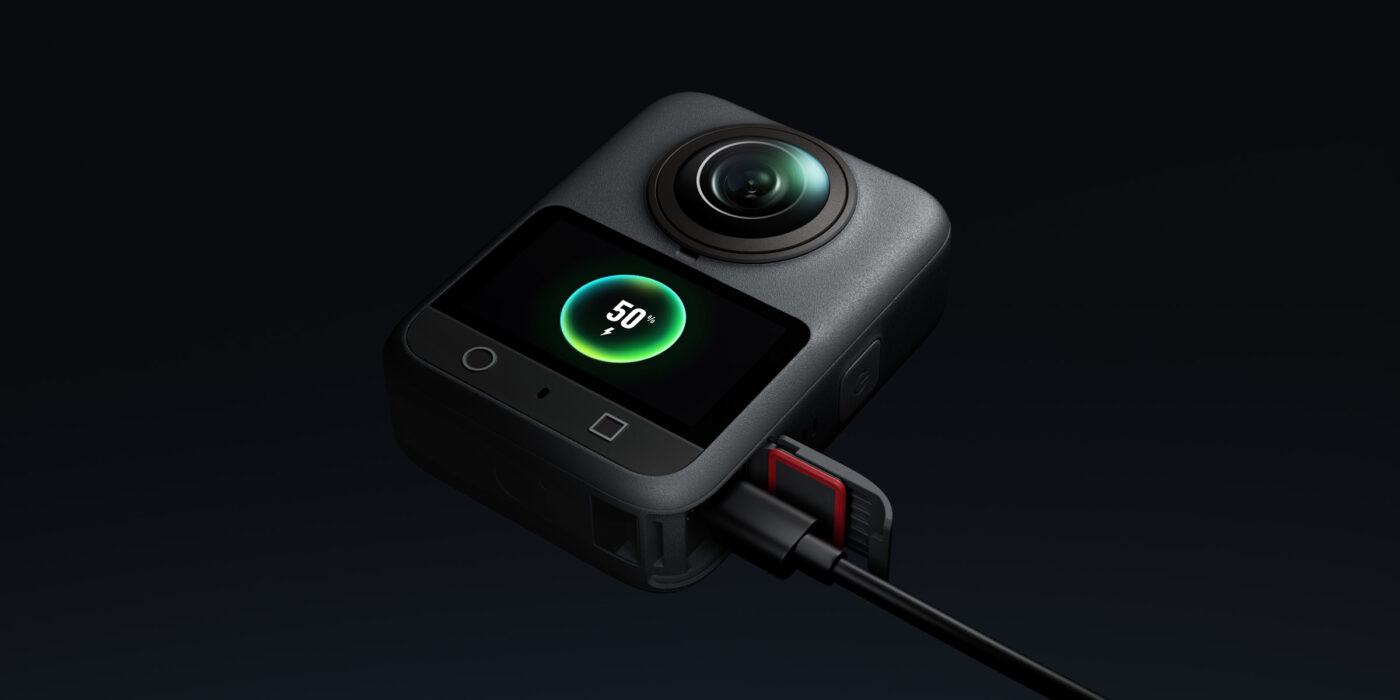

In terms of storage, it offers 128 GB internal memory (with 105 GB usable) and a microSD slot (up to 1 TB). A USB-C port is available for file transfers.
Osmo 360 pricing and availability
The DJI Osmo 360 camera is available now in various bundles, priced strategically below the Insta360 X5, which starts at $549 in its standard kit.
The standard combo is available for $549. It includes the Osmo 360 camera, one battery, a protective pouch, lens cloth, USB-C PD (USB 3.1) cable, and rubber lens cover.
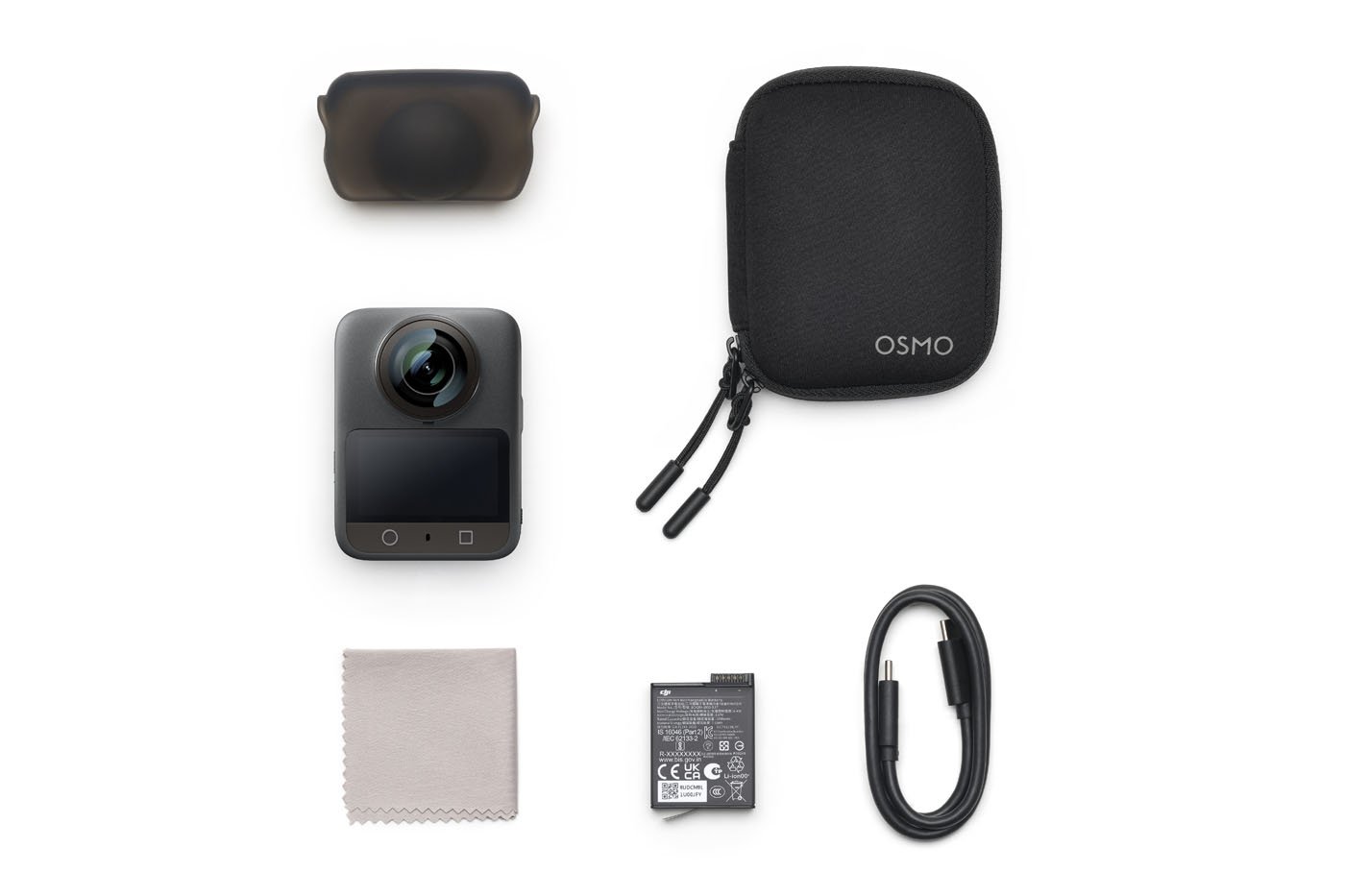

An Adventure Combo, available for $649, adds a 1.2 m invisible selfie stick, adjustable quick-release mount, and a 3-battery charging case with two extra batteries.
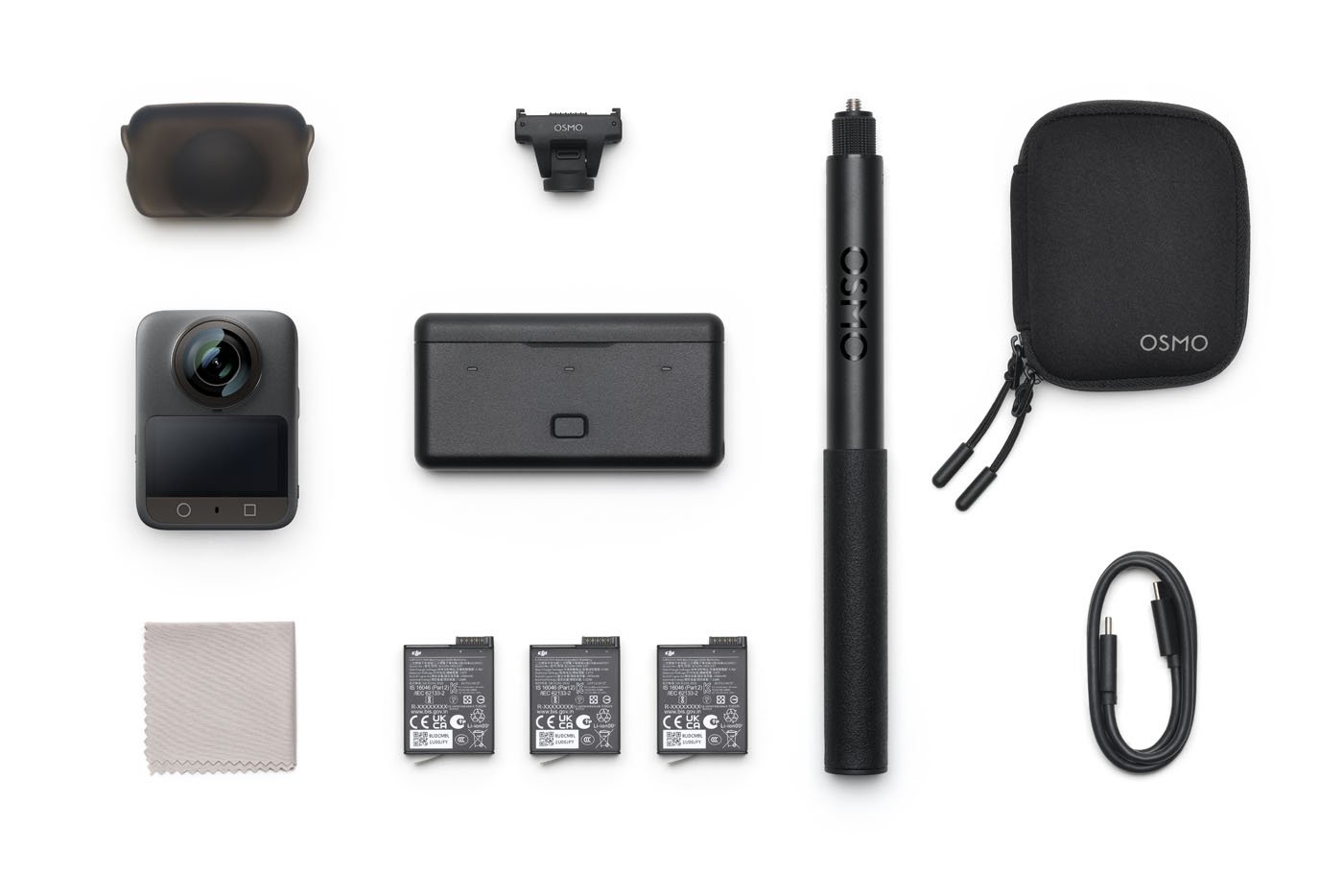

The DJI Osmo 360 is available at B&H and on Amazon.
A dedicated accessory line is also available (motorcycle mounts, battery grips, clamps, 2.5 m carbon pole, helmet kits, etc.) to fit all shooting scenarios.
Our first impressions of DJI’s Osmo 360
With the Osmo 360, DJI isn’t just entering the 360° camera market—the Chinese giant is making a bold statement in a field long dominated by Insta360.
It’s hard not to compare the new Osmo 360 to the Insta360 X5, currently the benchmark in the high-end 360 camera space. While both shoot in 8K, DJI uses a 1-inch sensor (versus 1/1.28” on the Insta360), promising better low-light performance.
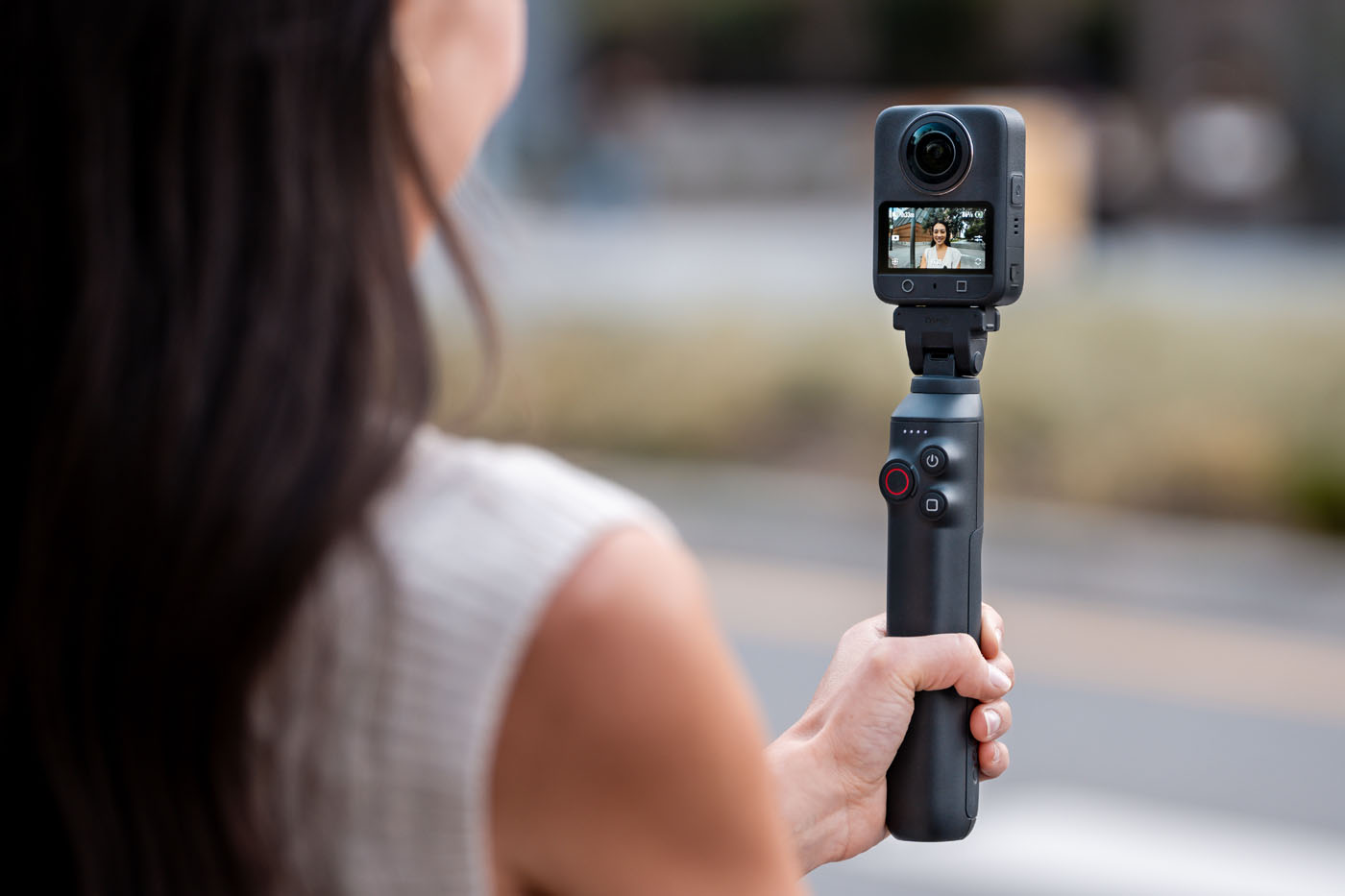

DJI offers better battery life, a lighter and more compact design (183 g vs 239 g for the Insta360 X5), and an integrated audio ecosystem. Thanks to its D-Log M 10-bit support and integration with Mimo, Studio, and the Premiere Pro plug-in, this camera is a very compelling alternative—especially in terms of pricing.
That said, GoPro is expected to launch its GoPro Max 2 soon, which may shake things up in the 360° camera world.

